10 Best Native Plants for Nashville, TN
BY BECK CARTER | APRIL 4TH, 2023 | LAWN CARE, NASHVILLE, TENNESSEEIn Music City, homeowners need a lawn that both stands out and blends with the local ecosystem. Native plants can be perfect for giving lawns a meadow-like appearance and attracting beautiful butterflies. Below, we break down the Nashville native plants that will make you the talk of the town.
In this article:
- Why Go Native?
- 10 Native Plants for Nashville
- FAQ about Nashville Native Plants
- Choose the Right Plants for Your Nashville Landscape
Why Go Native?
One of the ways gardeners ensure that plants work well for their region is by referencing the USDA Plant Hardiness Zone Map. This is especially important when selecting non-native plants for your yard. However, by selecting native plants, homeowners can ensure that their lawns will thrive.
Another good resource for those looking to learn more about native plants is the Tennessee Native Plant Society. They advise homeowners who want native plants to familiarize themselves with their HOA or city ordinances that may classify some native plants as weeds. To avoid this, you can also place a sign on your lawn indicating that your plants are native and helping local pollinators.
10 Native Plants for Nashville
1. Northern Maidenhair Fern (Adiantum pedatum)
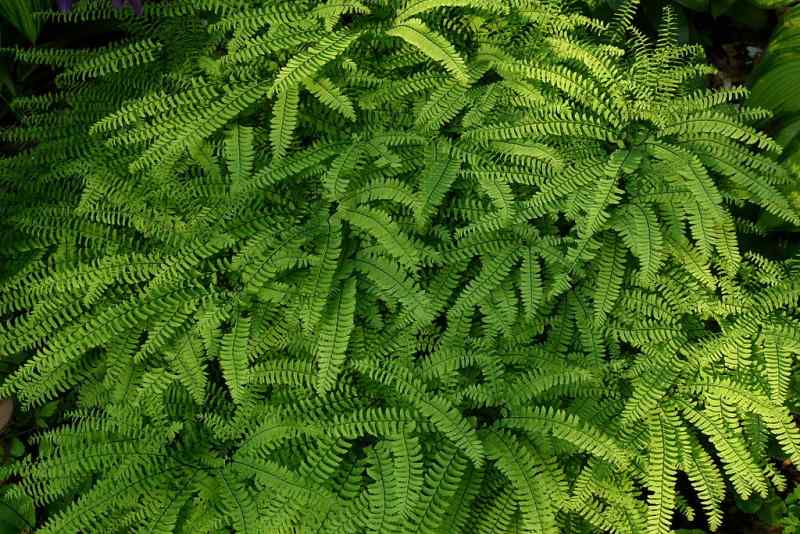
Photo Credit: Schnobby / Wikimedia Commons / CC BY-SA 3.0
Northern maidenhair ferns are perfect for gardens with shade. This slow-growing native plant is typically considered low maintenance. Northern maidenhair is a dainty plant that grows naturally in wooded areas around Tennessee. Typically, this fern sprouts fiddleheads that are reddish purple or pink.
Plant type: Fern
Sun: Partial shade to full shade
Water needs: Moist soil
Soil: Prefers humus-rich well-drained soil
Duration: Perennial
Mature height: Up to 2 feet
2. Butterfly Weed (Asclepias tuberosa)
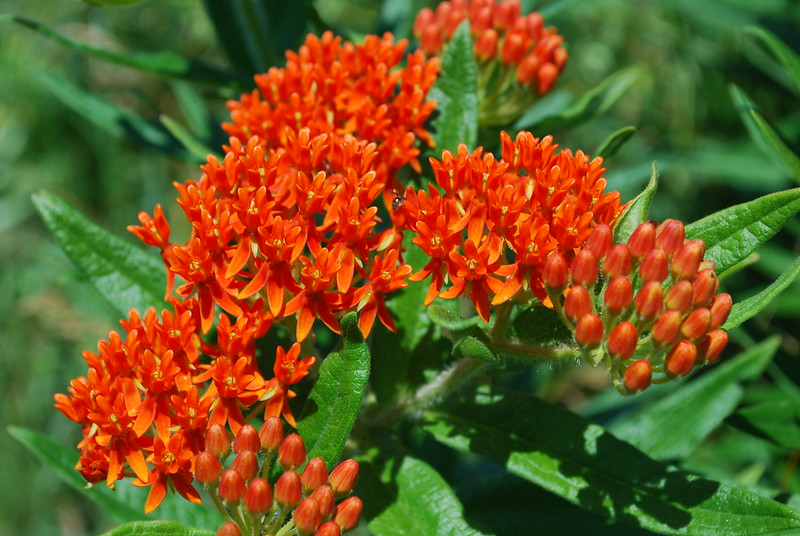
Photo Credit: Joshua Mayer / Flickr / CC BY-SA 2.0
Butterfly weed is part of the milkweed family. This colorful long-lasting wildflower attracts butterflies and bees due to its abundant nectar. A large taproot allows this plant to survive harsh, dry conditions. But be careful. Butterfly weed tolerates drought but can struggle is overwatered.
Plant type: Flower
Sun: Full to partial sun
Water needs: Medium to dry
Soil: Prefers sandy loam
Duration: Perennial
Mature height: 1 to 2 feet
3. Blue Star (Amsonia tabernaemontana)
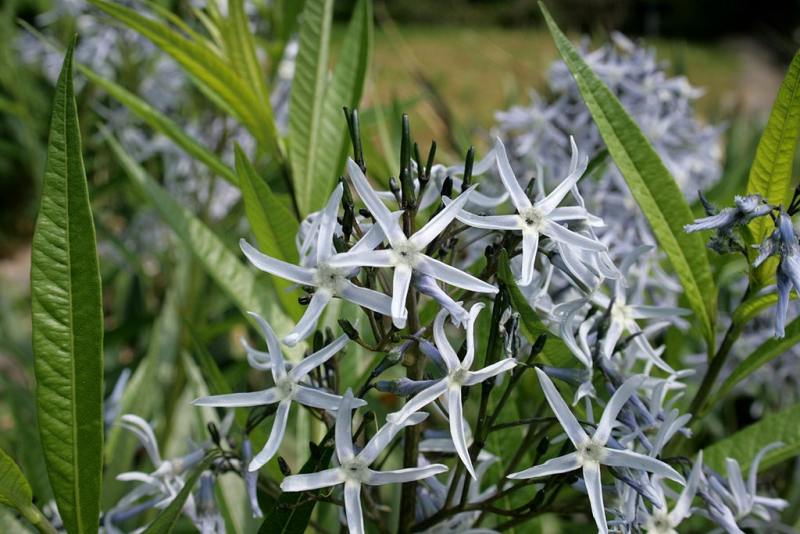
Photo Credit: Sten Porse / Wikimedia Commons / CC BY-SA 3.0
Blue star is a feathery plant that features blue, star-shaped flowers and turns a lovely golden color in the fall. A low-maintenance plant, it attracts hummingbirds and butterflies. Blue stars can survive in a variety of soil types including clay and sand. It is a long-lasting plant that resists pests such as deer and rabbits.
Plant type: Flower
Sun: Full to partial sun
Water needs: Wet to moderately wet soil
Soil: Prefers humus-rich soil
Duration: Perennial
Mature height: Up to 3 feet
4. Dogwood (Cornus stricta)
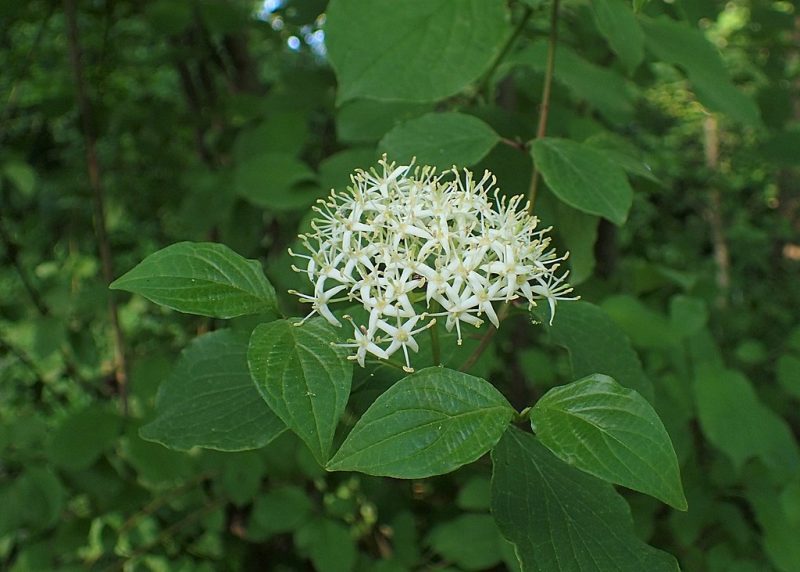
Photo Credit: Krzysztof Ziarnek, Kenraiz / Wikimedia Commons / CC BY-SA 4.0
A small low-maintenance tree, the dogwood works well as a screen or border accent. Dogwoods bloom white flowers in early spring and produce blue or red fruit in the fall. This native tree grows well in swampy or wetland areas. The dogwood attracts wildlife such as birds, butterflies, and bees.
Plant type: Tree
Sun: Partial shade to full shade
Water needs: Wet to medium moisture
Soil: Prefers loam, tolerates sandy soil
Duration: Perennial
Mature height: 8 to 15 feet
5. Maximilian’s Sunflower (Helianthus maximiliani)
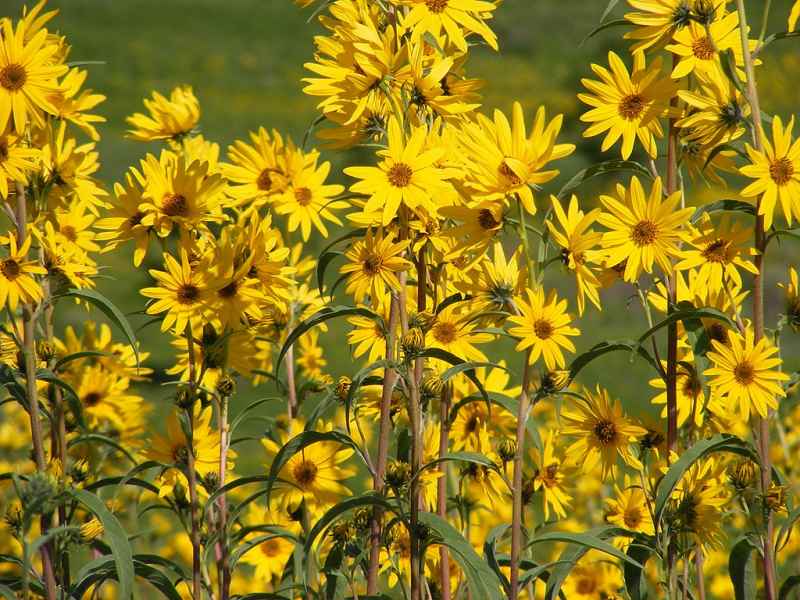
Photo Credit: USFWS Mountain-Prairie / Wikimedia Commons / CC BY 2.0
In addition to Maximilian’s sunflower, several other varieties of sunflowers are native to middle Tennessee. Sunflowers are best suited for gardens with plenty of space because they can grow up to 7 feet tall. These bright, showy yellow flowers attract bees, butterflies, and birds. Maximilian’s sunflower spreads aggressively and is easy to grow.
Plant type: Flower
Sun: Full sun
Water needs: Moderately wet to moderately dry
Soil: Tolerant of a variety of soils
Duration: Perennial
Mature height: Up to 7 feet
6. Wild Blue Indigo (Baptisia australis)
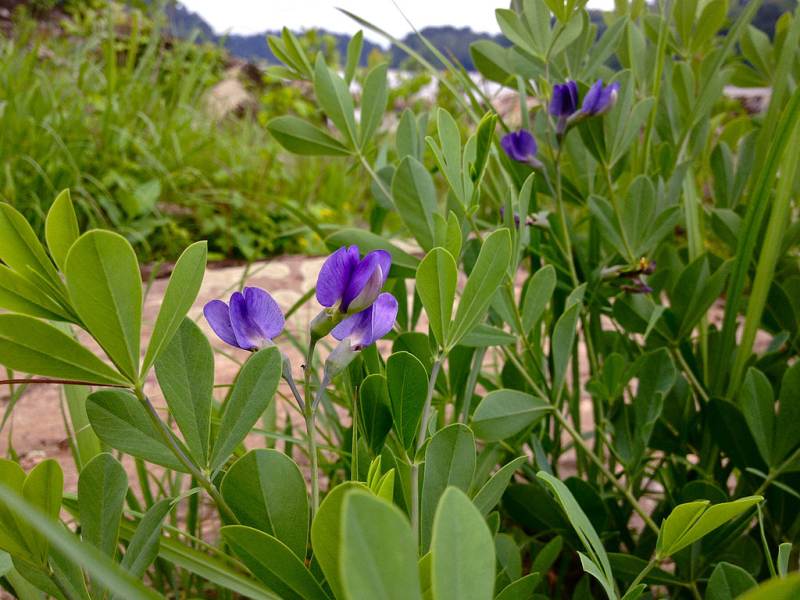
Photo Credit: Fritzflohrreynolds / Wikimedia Commons / CC BY-SA 3.0
Wild blue indigo sprouts blue flowers and becomes a robust bush-like plant when fully grown. This plant turns a silvery-gray color during the fall. Wild blue indigo can be difficult to transplant due to its extensive root system. Butterflies and bees enjoy the flowers.
Plant type: Flower
Sun: Full sun, tolerates some shade
Water needs: Medium
Soil: Tolerant of a variety of soils
Duration: Perennial
Mature height: 3 feet
7. American Wisteria (Wisteria frutescens)
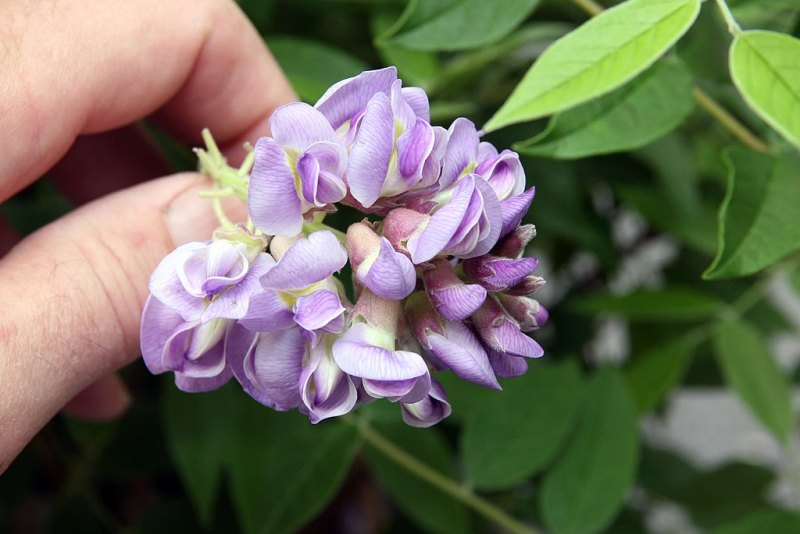
Photo Credit: Photo by David J. Stang / Wikimedia Commons / CC BY-SA 4.0
American wisteria is a climbing vine with shiny dark green leaves. Its fragrant bluish-purple flowers are large and form in drooping clusters. American wisteria is frequently used as an ornamental plant. Additionally, this plant is important for butterfly larvae who use it as a food source. American wisteria can be susceptible to fungal diseases and chewing insects.
Plant type: Vine
Sun: Full to partial sun
Water needs: Medium
Soil: Moderately fertile loam
Duration: Perennial
Mature height: 15 to 30 feet
8. Buttonbush (Cephalanthus occidentalis)
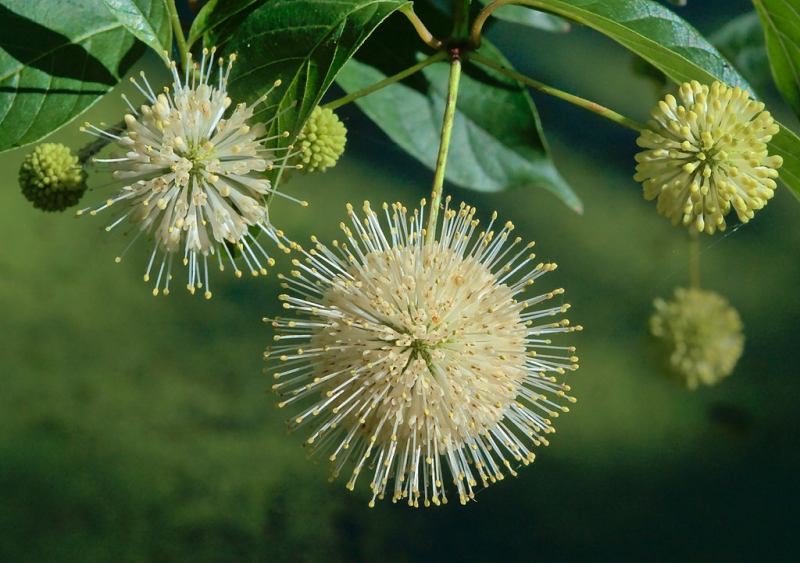
Photo Credit: The Cosmonaut / Wikimedia Commons / CC BY-SA 4.0
The buttonbush is a shrub that has distinctive white flowers that grow in spherical clusters. These clusters of flowers resemble pincushions and give the plant a somewhat tropical appearance. The buttonbush grows brown ornamental fruit.
Because buttonbush naturally grows around ponds and in swamps, it requires a particularly moist environment when grown in a garden. A honey plant, the buttonbush attracts bees, butterflies, and water birds such as ducks.
Plant type: Shrub
Sun: Full sun
Water needs: Wet to moderately wet soil
Soil: Tolerant of a variety of soils
Duration: Perennial
Mature height: 5 to 12 feet
9. Scarlet Bee Balm (Monarda didyma)
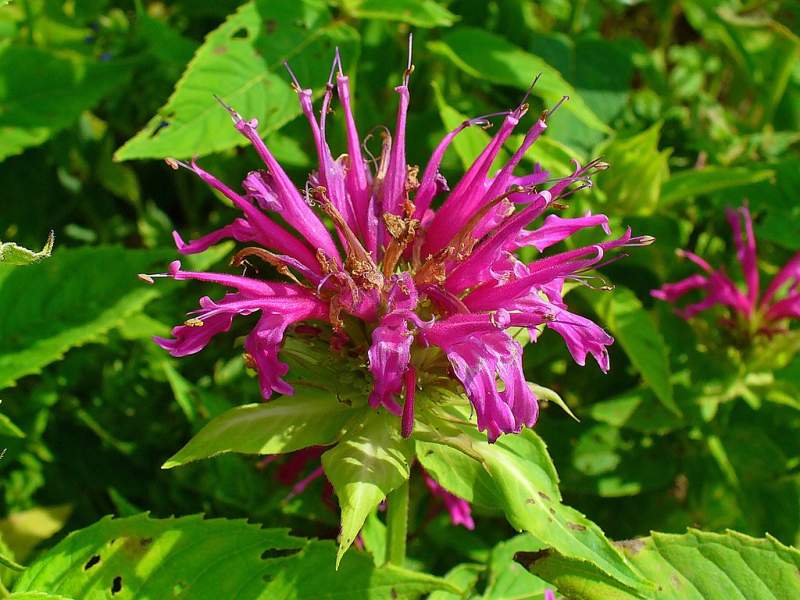
Photo Credit: H. Zell / Wikimedia Commons / CC BY-SA 3.0
Scarlet bee balm has beautiful red flowers in mid to late summer. Because this herbaceous perennial is in the mint family, it will give off a minty scent when its leaves are crushed. Scarlet bee balm attracts wildlife such as bees, hummingbirds, and butterflies. Its flowers are also edible.
Plant type: Flower
Sun: Full to partial sun
Water needs: Wet to moderately wet soil
Soil: Prefers rich humus soil
Duration: Perennial
Mature height: 2 to 4 feet
10. Woodland Phlox (Phlox divaricata)
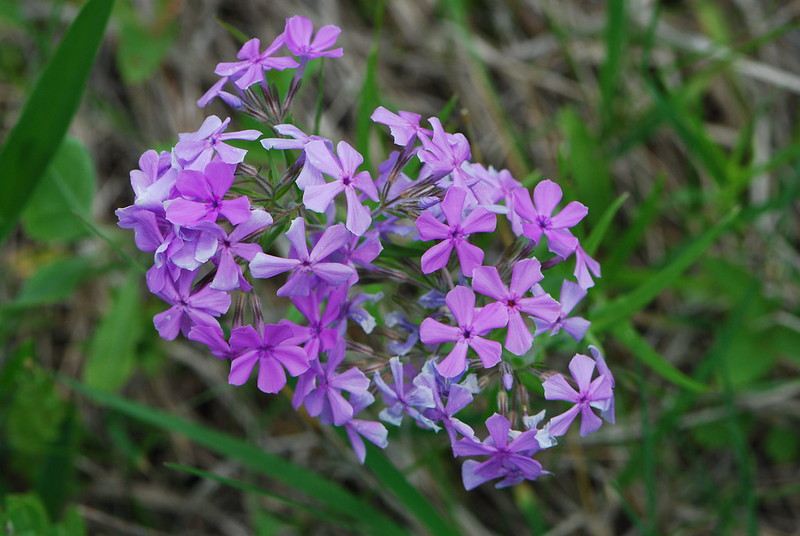
Photo Credit: Joshua Mayer / Flickr / CC BY-SA 2.0
Woodland phlox is a herbaceous perennial often used as an ornamental plant due to its lovely blue flowers. While it has attractive fragrant flowers, it is a fairly nondescript plant when not in bloom. Woodland phlox attracts hummingbirds and butterflies. Unfortunately, it also draws deer and rabbits so it may need additional care and protection.
Plant type: Flower
Sun: Part to full shade
Water needs: Wet to moderately wet soil
Soil: Prefers rocky or sandy soils
Duration: Perennial
Mature height: 1 to 2 feet
FAQ about native plants for Nashville
Plants native to your area are more likely to establish quickly and thrive. These native plants create a natural habitat for local wildlife such as butterflies and birds in your backyard. Together, this means that native plants are usually lower maintenance and better for the environment.
It is typically best to plant your garden a few weeks before the last frost date, which, in Nashville, is April 15.
Blue star, wild blue indigo, American wisteria, and buttonbush can be toxic if ingested.
Alternatively, Maximilian’s sunflower and scarlet bee balm are edible plants.
The Final Word
These common Tennessee native plants each have features that make them perfect for your Nashville lawn. Homeowners in Nashville should choose the native plants that fit their preferred maintenance level and aesthetic needs. Ensure that you select native plants that bring desirable wildlife to your home and confirm the toxicity level of your plants if you have children or pets.
Still, looking for ways to enhance your Music City lawn? Check out our list of the best grasses for Nashville lawns to find a variety of options that are ideal for Tennessee’s transitional climate. For help with lawn maintenance in Nashville, contact your local professional.
Main Photo Credit: Oak Hill Garden Club in Nashville / Carol Norquist, NGC Chairman / Flickr / CC BY-ND 2.0